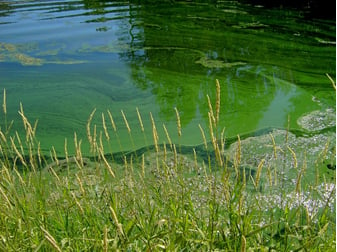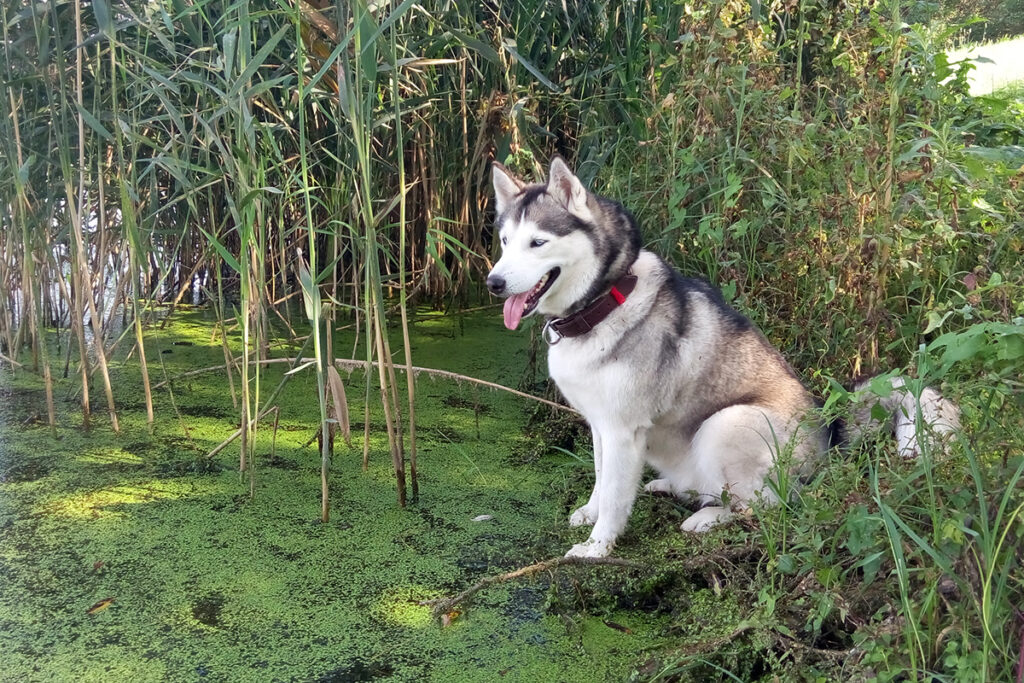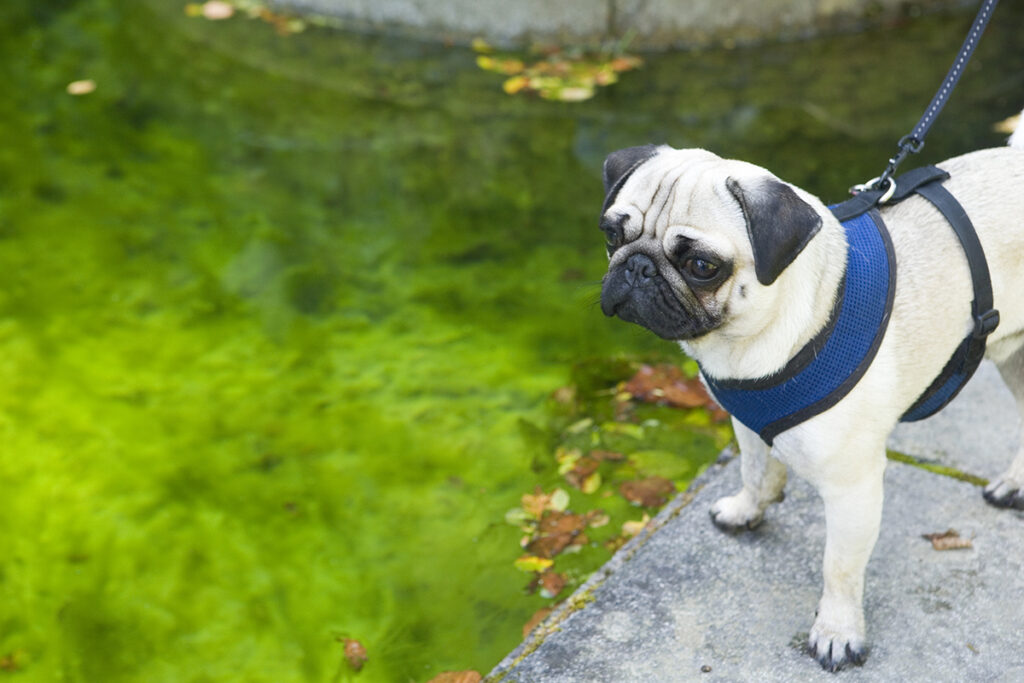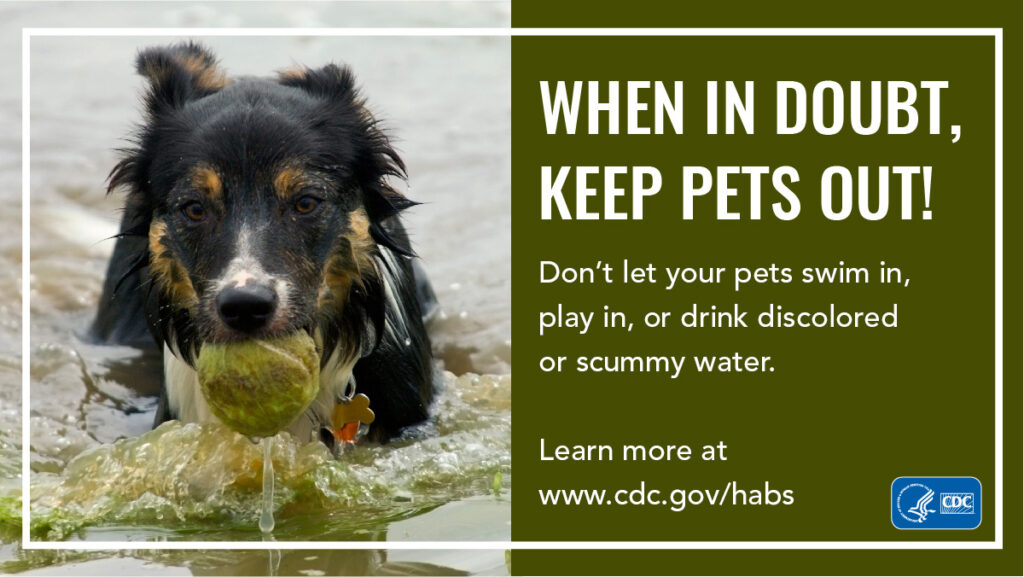Pets, especially hunting and sporting dogs that love to swim, farm animals, wildlife, fish, and even people are at risk of getting sick and even dying from harmful algal blooms. Cats can be affected, but the risk is lower due to their aversion to swimming and their preference for drinking only fresh water.

These blooms are increasing around the world and the United States is seeing its fair share. In particular, our country’s freshwater ponds and lakes are being affected and the deadliest blooms are formed of blue-green algae or cyanobacteria. You should also be aware that this bacteria can grow in backyard fountains, garden pots, birdbaths, and anywhere there is stagnant water. Not all algae are harmful. In general, algae produce oxygen and contribute to fueling healthy habitats.
Big blue-green algal blooms tend to occur when the weather is warm and sunny, roughly around 75 degrees Fahrenheit, and the water is warm. The largest blooms occur in late summer and fall. They happen due to fertilizer or sewage runoff into the ponds and lakes and are possibly being caused by global warming as well. It will look like the water is covered by a pea-green or blue mat or even like paint on the surface of the water. Depending on wind conditions, the algae may also concentrate along the water’s edge forming thick mats. It may smell bad.

Animals can get poisoned, and even die, from simply swimming or playing in the water. Drinking or eating the algae can be fatal very quickly. If your pets go into the water, you must be sure to rinse them with fresh water right away because the algae can stick to pets’ fur and get ingested when they clean themselves. People, especially children, can get sick as well from swimming, fishing, kayaking, or wading in the contaminated water.
Blue-green algae produces two type of toxins. One type severely damages the liver and causes the organ to fail. The animals’ blood sugar and protein levels drop and a jaundice appears (yellowing of gums and skin). They become weak and lethargic and they may vomit and have diarrhea. Often the build-up of toxins, due to the liver damage, affects the nervous system causing seizures and disorientation. Shock and coma follow. Some pets die within 12 – 24 hours of ingesting the algae.

The other toxin affects the nervous system directly and even more quickly — within 30 to 60 minutes. The animals affected drool excessively and produce large amounts of tears. Their muscles are affected with tremors and then they become rigid or paralyzed. This leads to a decreased intake of oxygen (mucous membranes and skin become blue) and it becomes difficult to breathe. Often respiratory failure leads to death—minutes to hours from ingestion of the algae.
Speedy treatment is absolutely critical if your pet has ingested this algae. If you get your dog or cat to a veterinarian before symptoms begin, the doctor can induce vomiting, give oral activated charcoal to absorb the toxic substance, and pump the stomach. If your pet is sick before you can get him/her to a veterinarian, it may be too late to remove the poison. Tragically, there is no antidote for blue-green algae poisoning.
Be proactive and avoid all ponds and lakes with algal blooms. Even experts cannot tell which blooms are poisonous and which aren’t without some analysis. Look for signs since public health departments often test water in areas with algal outbreaks. The signs warn about cyanobacteria blooms and advise that people and pets should stay out of the water. Perhaps, most importantly, make other pet owners who enjoy being outdoors aware of this deadly problem to help avoid more pet deaths.



